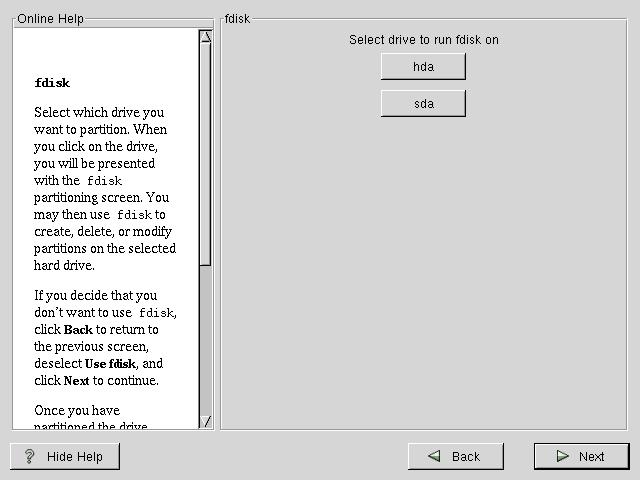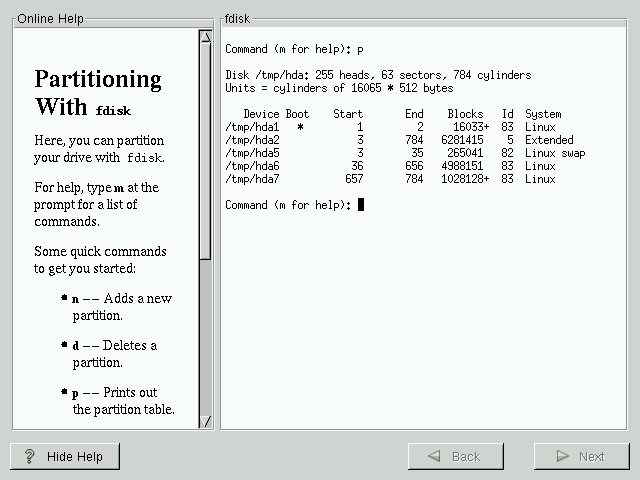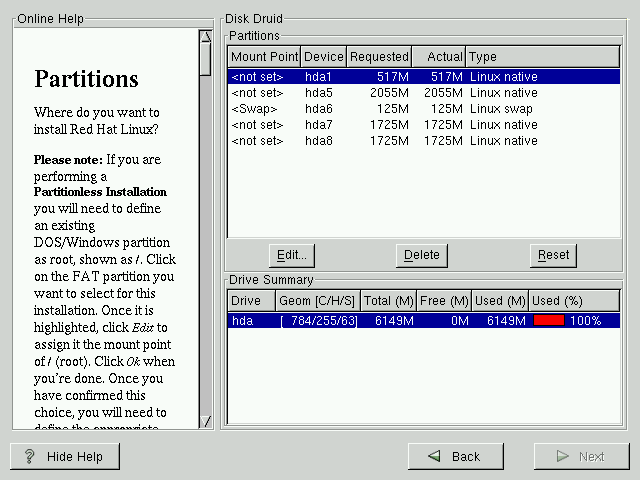Partitioning with fdisk
 | Caution |
|---|---|
Unless you have previously used fdisk and understand how it works, we do not recommend that you use it. Disk Druid is an easier and friendlier partitioning tool for those new to partitioning their system. To exit fdisk click Back to return to the previous screen, deselect fdisk, and then click Next. |
This section applies only if you chose to use fdisk to partition your system. If are not using fdisk, please skip to the section called Automatic Partitioning for automatic partitioning or the section called Partitioning Your System for partitioning with Disk Druid.
If you have chosen to use fdisk, the next screen (see Figure 15-12) will prompt you to select a drive to partition using fdisk.
Once you have chosen which drive to partition, you will be presented with the fdisk command screen (see Figure 15-13). If you are unsure as to what command you should use, type m at the prompt for help. Please refer to the Chapter 14 for an overview of fdisk. When you've finished making partitions, type w to save your changes and quit. You will be taken back to the original fdisk screen where you can choose to partition another drive or continue with your installation.
After you have partitioned your drive(s), click Next. You will then use Disk Druid to assign mount points to your partitions.
You will not be able to add new partitions using Disk Druid, but you will be able to edit mount points for those you have already created.
Skip to the section called Choose Partitions to Format for further installation instructions.


